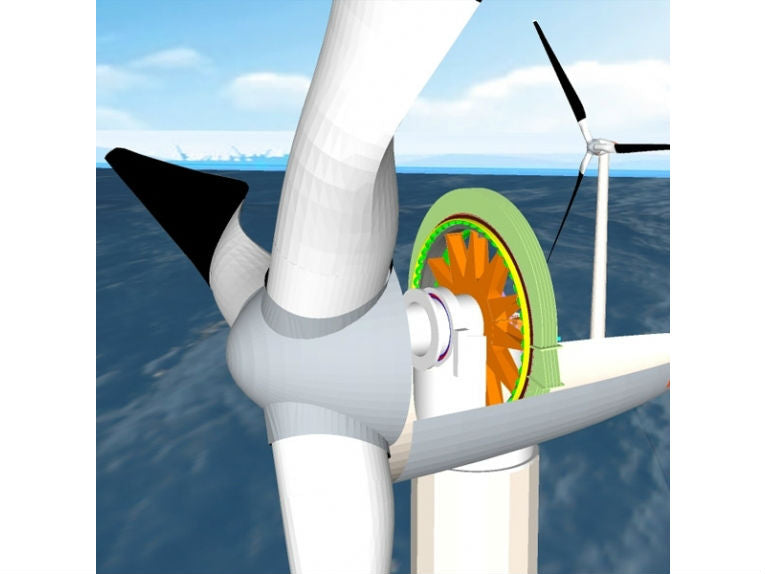The EU are funding more power, more reliability and less mass in the SUPRAPOWER off-shore wind turbine. The key objective over the next 4 years is to achieve a suitable superconducting or SC technology in order to increase the power capabilities of turbines above 10MW.
While we've all been making do with foreign-built wind-power, the Europeans have given Tecnalia the go-ahead to combine brains and expertise of 9 European partners in renewable energy in order to make it cheaper and more efficient. Tecnalia is a Spanish company which leads in technological applied research, situated in Derio in northern Spain.
How to do it:
1. reduce the head mass of the huge current models, alongside size and costing by constructing a smaller generator, using the aforesaid SC technology ;
2. have a direct drive system which will help the reduction in cost as well as operating, transportation and maintenance costs;
3. maximise power with dedicated control systems;
4. support the development of offshore wind potential and encourage the use of turbines.
Since December, electrical conversion aspects and manufacturing concerns have been taken into consideration as the scaling up exercise from current wind turbine types is begun. Permanent magnet generators are heavy requiring large foundations and massive support for operation and maintenance. The SC head weighs only 200t with a speed of 10rpm and a torque of 10MN-m. That 10MW+ power output is the present limit for any permanent magnet turbine.
The wire used for the SC generator is called MgB2, forming a coil design specially-suited to rotational functions. Apparently MgB2 wire avoids the high price of many alternative systems based on HTS wire. The additional attraction is that rare earth elements are not required either, as the price of these elements rises faster and faster.
The Karlruhe Institute of Technology is involved with its Cryogenic Engineering Division, so that a rotating cryostat can cool down the superconducting coils to an amazing - 253°C. Dr Holger Neumann explains further: "Since the cooling performance of such coolers is limited, we must ensure that heat between them and the superconducting coils is conducted well. Besides, we must consider the influence of rotation on the heat pipes we may use. On the other hand, the cryostat needs a highly effective thermal insulation."
The concepts of new cryogenic technology without using polluting cryogenic fluids and the use of warm iron pole rotors mean vast cost reduction as promised in the original specification, providing for the high toque transmission. The modularity of construction will also make the appeal for operation and maintenance much greater. Already, the manufacturing costs are expected to be reduced by 30%.
Such advances mean the prospect of an EU carbon emissions cut of 20% can be more easily met, with dramatic cuts in greenhouse gases from all fossil fuels.










